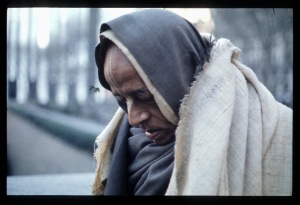CC Adi 3.68: Difference between revisions
m (1 revision(s)) |
GitaJayanti (talk | contribs) No edit summary |
||
| Line 1: | Line 1: | ||
{{ | [[Category:Sri Caitanya-caritamrta - Adi-lila Chapter 03|C068]] | ||
<div style="float:left">'''[[Sri Caitanya-caritamrta|Śrī Caitanya-caritāmṛta]] - [[CC Adi|Ādi-līlā]] - [[CC Adi 3|Chapter 3: The External Reasons for the Appearance of Śrī Caitanya Mahāprabhu]]'''</div> | |||
<div style="float:right">[[File:Go-previous.png|link=CC Adi 3.67|Ādi-līlā 3.67]] '''[[CC Adi 3.67|Ādi-līlā 3.67]] - [[CC Adi 3.69|Ādi-līlā 3.69]]''' [[File:Go-next.png|link=CC Adi 3.69|Ādi-līlā 3.69]]</div> | |||
{{CompareVersions|CC|Adi 3.68|CC 1975|CC 1996}} | |||
{{RandomImage}} | |||
==== TEXT 68 ==== | ==== TEXT 68 ==== | ||
<div | <div class="verse"> | ||
‘aṅga’-śabde aṁśa kahe śāstra-paramāṇa | :‘aṅga’-śabde aṁśa kahe śāstra-paramāṇa | ||
aṅgera avayava ‘upāṅga’-vyākhyāna | :aṅgera avayava ‘upāṅga’-vyākhyāna | ||
</div> | </div> | ||
| Line 12: | Line 16: | ||
==== SYNONYMS ==== | ==== SYNONYMS ==== | ||
<div | <div class="synonyms"> | ||
aṅga- | ''aṅga-śabde''—by the word aṅga, or limb; ''aṁśa''—part; ''kahe—''says; ''śāstra''—of the scriptures; ''paramāṇa''—the evidence; ''aṅgera''—of the limb; ''avayava''—the constituent part; ''upāṅga-vyākhyāna''—the exposition of the word upāṅga. | ||
</div> | </div> | ||
| Line 19: | Line 23: | ||
==== TRANSLATION ==== | ==== TRANSLATION ==== | ||
<div | <div class="translation"> | ||
According to the evidence of the revealed scriptures, a bodily limb [aṅga] is also called a part [aṁśa], and a part of a limb is called a partial part [upāṅga]. | According to the evidence of the revealed scriptures, a bodily limb [aṅga] is also called a part [aṁśa], and a part of a limb is called a partial part [upāṅga]. | ||
</div> | </div> | ||
__NOTOC__ | |||
<div style="float:right; clear:both;">[[File:Go-previous.png|link=CC Adi 3.67|Ādi-līlā 3.67]] '''[[CC Adi 3.67|Ādi-līlā 3.67]] - [[CC Adi 3.69|Ādi-līlā 3.69]]''' [[File:Go-next.png|link=CC Adi 3.69|Ādi-līlā 3.69]]</div> | |||
__NOTOC__ | |||
__NOEDITSECTION__ | |||
Revision as of 05:04, 28 July 2021
Śrī Caitanya-caritāmṛta - Ādi-līlā - Chapter 3: The External Reasons for the Appearance of Śrī Caitanya Mahāprabhu

His Divine Grace
A.C. Bhaktivedanta Swami Prabhupada
A.C. Bhaktivedanta Swami Prabhupada
TEXT 68
- ‘aṅga’-śabde aṁśa kahe śāstra-paramāṇa
- aṅgera avayava ‘upāṅga’-vyākhyāna
SYNONYMS
aṅga-śabde—by the word aṅga, or limb; aṁśa—part; kahe—says; śāstra—of the scriptures; paramāṇa—the evidence; aṅgera—of the limb; avayava—the constituent part; upāṅga-vyākhyāna—the exposition of the word upāṅga.
TRANSLATION
According to the evidence of the revealed scriptures, a bodily limb [aṅga] is also called a part [aṁśa], and a part of a limb is called a partial part [upāṅga].